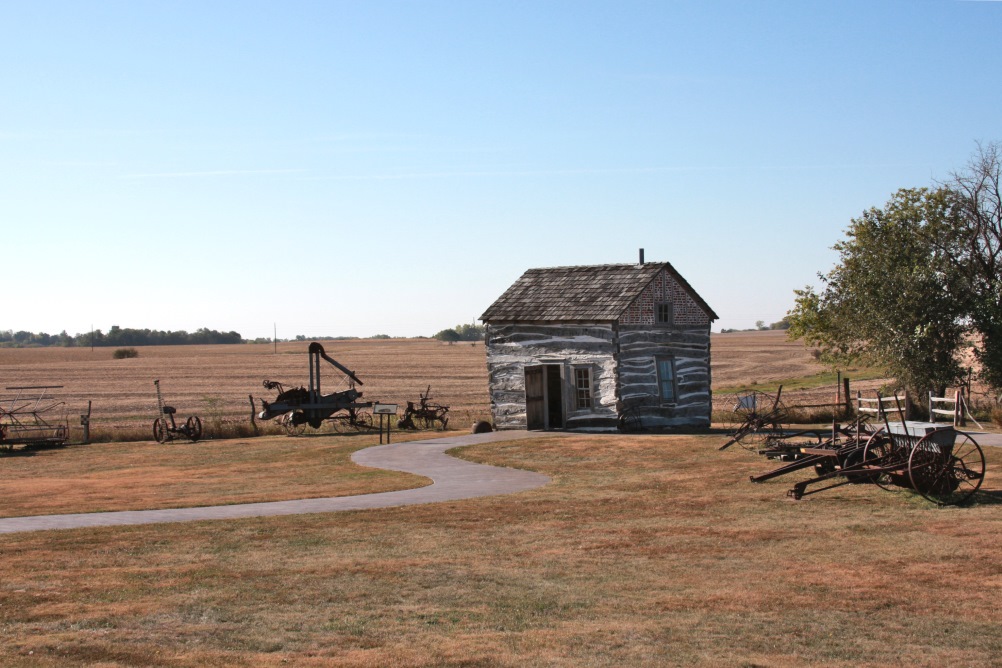October 9, 2022 @ 09:00 CST
Site Visit #60
Many people dream of having a piece of land that they own on which to build their home. It was one motivation a lot of Europeans had for emigrating to the United States. The Homestead Act offered just such an opportunity at no monetary cost to thousands of people.
Signed into law by Abraham Lincoln in the midst of the Civil War, and effective on January 1, 1863, the Homestead Act opened up huge tracts of “government-owned” land to settlement. One would file a claim on a particular tract and be granted an exclusive patent for the land. If, after five years, they could show that the land was being lived on and had been farmed, permanent title to the land was granted.
I’m sure many people had the same impression I had of homesteading: that it was something that happened in the late 1800s in the great plains states and territories. As I discovered at the Homestead National Historical Park, the Homestead Act was not repealed until 1976 in the lower 48 states, and until a decade later in Alaska.
Yes, Alaska. At its peak, thirty states had land available for homesteaders. The Homestead Act may have been one of the least discriminating laws of the time. Anyone meeting the requirements was eligible, and the requirements were few: over the age of 21, a U.S. citizen OR intent to become one, and have never fought against the U.S. or aided its enemies.

No racial requirement. No sex requirement. Many women did indeed become successful homesteaders. Many blacks, escaping the rampant racism of the postwar south did, too. President Hayes also advocated for allowing Indians to homestead in the 1870s, though I don’t know if he succeeded in that intent.
Of course, most Indians disputed the claim that the land was the government’s to give away. Unfortunately, this was an example of two very different cultures clashing. The Indians had no concept of private land ownership. Western culture did. The Indians did not believe one could give away that which cannot be owned, while the government considered all lands not owned by someone to be theirs. Right or wrong, the government won that battle literally on the battlefield.
There is a reason that the Homestead National Historical Park is located where it is, in rural south Nebraska. It is on a tract of land that was homesteaded by Daniel Freeman. He staked his claim just after midnight on January 1, 1863, making him one of the very first to receive a patent. Whether he was the absolute first is lost to history as time-of-day was not written on the patents, but he has been unofficially given that honor.
The visitor center has a very nice video on homesteading, which includes comments from actual homesteaders and descendants of homesteaders. The lower level contains a large exhibit of relics from the period, along with many displays describing different events and life in general for the times.
Outside, a small cabin built by a neighboring homesteader has been relocated here. It is a one-room, two-story structure that housed a large family! Outside of the cabin are several original pieces of farm equipment. There are also some trails around the 160-acre plot through the tallgrass prairie that the Park Service has restored.
Just up the road is a small one-room schoolhouse built shortly after Freeman made his claim. His own children attended this school, which remained open until 1965. Nearby is the Educational Center. This is a separate facility from the visitor center and is geared more toward general education on farming techniques and how families lived at the time. I did not stop by to visit it as I had a long drive ahead of me.
As I drove away from the park, I had once again learned more about homesteading in one morning than I had learned in my entire life before!
Steve